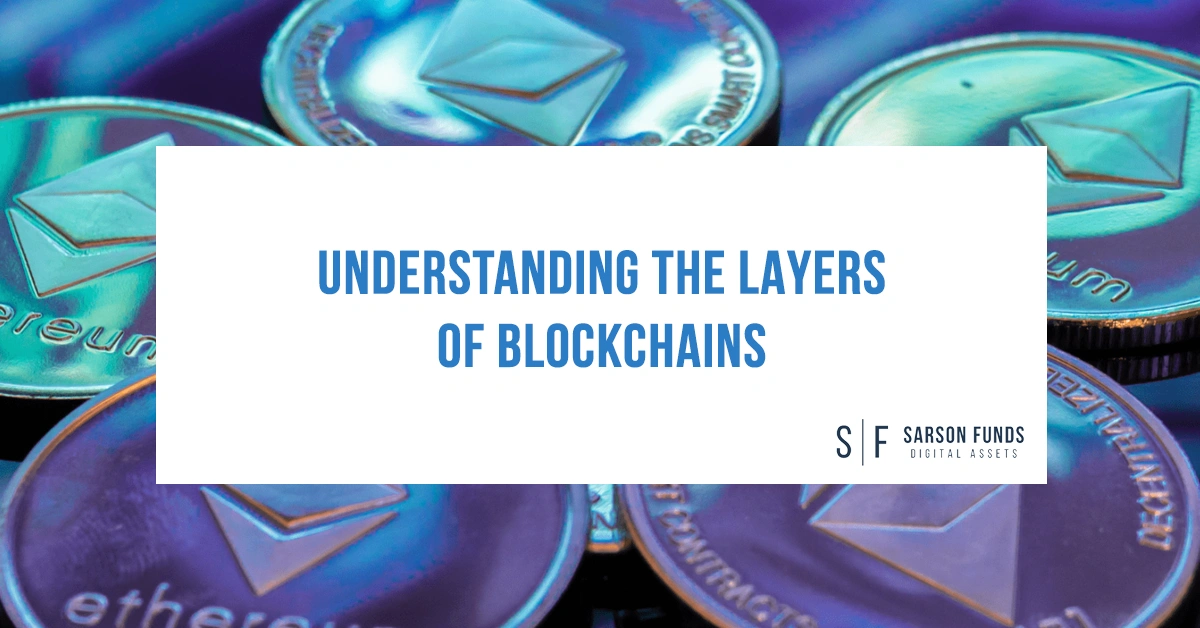
For anyone involved in the cryptocurrency space, terms like ‘layer one’, ‘layer two’, ‘layer three’, and even ‘layer zero’ have become commonplace. But what do these terms actually mean? How do they define the different types of blockchains? And why is it important to understand these differences when investing in the crypto space? This article aims to provide clarity on these questions and delve deeper into what it means to be a ‘layer one’ blockchain – the foundation of all blockchains.
Section 1: Layer 0 Blockchains – Internet Protocol (TCP/IP) enabling OSes to communicate
A foundational protocol that enables multiple L1s to interoperate by providing shared security, cross-chain messaging, and modular infrastructure (e.g., Polkadot, Cosmos, Avalanche Subnets).
Key Features:
- Interoperability Hub: Allows L1s (“app-chains”) to communicate natively (e.g., IBC in Cosmos).
- Shared Security: L1s can lease security from the L0 (e.g., Polkadot’s parachains).
- Customization: Lets developers build L1s with tailored consensus/rules (e.g., Avalanche subnets).
Use Cases
- L1: Best for standalone dApps needing security (e.g., DeFi on Ethereum).
- L0: Ideal for ecosystems of specialized chains (e.g., gaming subnet on Avalanche).
Section 2: Layer One Blockchains – The Bedrock of the Cryptoverse
At the core of the cryptocurrency space are the ‘layer one’ blockchains. These foundational blockchains underpin the entire ecosystem, forming the bedrock upon which other layers are built. Bitcoin, the largest and most well-known blockchain, is an example of a layer one blockchain. However, it’s worth noting that not all layer one blockchains are created equal. Bitcoin, for instance, does not qualify as an effective layer one on its own as it lacks the ability to handle smart contracts within its transaction confirmation process.
The effectiveness of a layer one blockchain hinges on its ability to handle ‘smart contracts’. Ethereum, for example, utilizes a Turing complete scripting language called Solidity. This enables it to handle logical operations like ‘if-then’ statements, allowing for composability. In simpler terms, this means you can write a computer program or a ‘smart contract’ on top of the Ethereum blockchain, hence the term ‘layer one’. This is a key distinction in the world of blockchains and the reason why Ethereum is currently the largest and most popular layer one.
Section 3: Layer Two Blockchains – Enhancing the Performance of Layer One
While a smart contract could technically be considered a ‘layer two’, in practice, the term ‘layer two’ has come to represent a blockchain built on a blockchain and does not refer to an application built on a blockchain (also called a dApp). A ‘layer two’ blockchain is one that utilizes a ‘layer one’ for part of its process, such as its transaction confirmations, but stores data and smart contract information on its own blockchain. Examples of this include Polygon, Optimism, and Arbitrum, all of which are built on top of Ethereum and can sometimes be referred to as “scaling solutions”
This ‘layering’ of blockchains allows layer two blockchains to improve the functionality of a layer one blockchain by enhancing its speed or data capacity, for example. Bitcoin, too, has a scaling solution known as the Lightning Network, but it’s not a blockchain-based technology won’t be discussed here.
Section 4: The Importance of Layer One Blockchains
When a new coin is launched, it is important to understand whether it is a layer one blockchain. Is this token designed to be built upon? If it is a tokenized version of a real-world asset, it doesn’t qualify as a layer one and is likely a directive product of a layer1 such as an ERC-20 token in the case of Ethereum. In the scenario of a tokenized asset, the utility offered by the token is limited to the ownership described in the token contract.
However, layer one blockchains are different from other tokens in that they are designed for composability and their ability to serve as a foundation for other applications. Ethereum was the pioneering force in this regard, being the first truly composable layer one blockchain. Since then, several other blockchains like Cardano, Solana, Algorand, Hedera, Casper Network, and Near Protocol and others have emerged. Each of these brings unique features to the table, vying for the attention of investors and users.
Section 5: Characteristics of an Effective Layer One Blockchain
To be seen as an as an effective layer one blockchain, a layer one blockchain must possess several key attributes:
- Wallet Compatibility: It must either have its own wallet to enable user interface or be compatible with an Ethereum wallet (EVM compatibility). An EVM-compatible chain allows users to use their existing Ethereum address and Ethereum wallet.
- Smart Contract Capability: The blockchain must have smart contract functionality. This is a crucial criterion and is the reason why blockchains like Bitcoin and Dogecoin should be excluded from valid “Layer1” consideration.
- Strong Development Community: An effective Layer1 blockchain should have a robust development community, typically fostered through a developer grant program and the foundation.
- Cross Chain Compatibility: The blockchain must have a solution for cross-chain compatibility, such as atomic swaps or a cross-chain bridge.
- Decentralized Liquidity: It’s crucial for the blockchain to offer decentralized liquidity, allowing the public to access the blockchain in a permissionless manner.
You can liken a layer one blockchain to an operating system, like the one that powers your phone or PC, but specially built for the crypto world. Just as an “Android” application will only work on an “Android” operating system and not on an Apple operating system, an application designed for Ethereum will only work on the Ethereum operating system. This principle holds true for Solana, Cardano, and other layer ones.
Section 6: The Role of Decentralization
Decentralization is a hot topic in the blockchain discussion, but it’s crucial to understand that being decentralized can be a disadvantage for a young layer one solution. Emerging layer one platforms need a centralized team that can develop necessary core infrastructure and operating protocol. This includes processes for cross-chain transactions, the development of their wallet, and the creation of permissionless liquidity pools.
For instance, Ethereum, which is highly decentralized today, would have faced significant challenges creating the necessary infrastructure had it been as decentralized at its inception.
Section 7: Why Are There So Many Different Layer One Solutions?
Each layer one solution can be viewed as distinctive software, tailor-made to cater to a variety of end-user applications. For example, Casper Network, a favorite among our holdings at Sarson Funds, is a blockchain designed for businesses. Solana, on the other hand, is emerging as an elegant solution for highly versatile and upgradable NFTs that can be used for online blockchain-based gaming.
Despite its slower speeds and higher gas prices, Ethereum is carving out its niche as the go-to platform for securities issuances and financial transactions. A $10 to $15 Ethereum gas fee for a transaction might seem reasonable for trading a digitized bond with a face value in the millions. However, it becomes prohibitively expensive for tasks like updating a Roblox avatar with its latest kill count.
As long as unique use cases for layer one protocols persist, we will continue to see the emergence of distinctive layer one solutions. Grasping the intricate layers of blockchains becomes crucial when evaluating investment opportunities in the cryptocurrency landscape.
By distinguishing between layer one and layer two blockchains, investors can gain a deeper understanding of the value and potential of different cryptocurrencies, thereby enabling more informed investment decisions.
Disclosures: Not investment advice. It should be assumed that Sarson Funds or its affiliated managers hold positions in all projects that are discussed. It is not possible to invest in any project directly through Sarson Funds, Inc. or its affiliated managers. Any investment product offered by managers affiliated with Sarson Funds should be assumed to be only available to Accredited Investors and subject to the individual terms and conditions of that offering including but not limited to those eligibility requirements associated with U.S. Securities Regulation D, section 506c. Talk with your financial advisor before making any investment decisions or have them contact Sarson Funds directly at [email protected].








